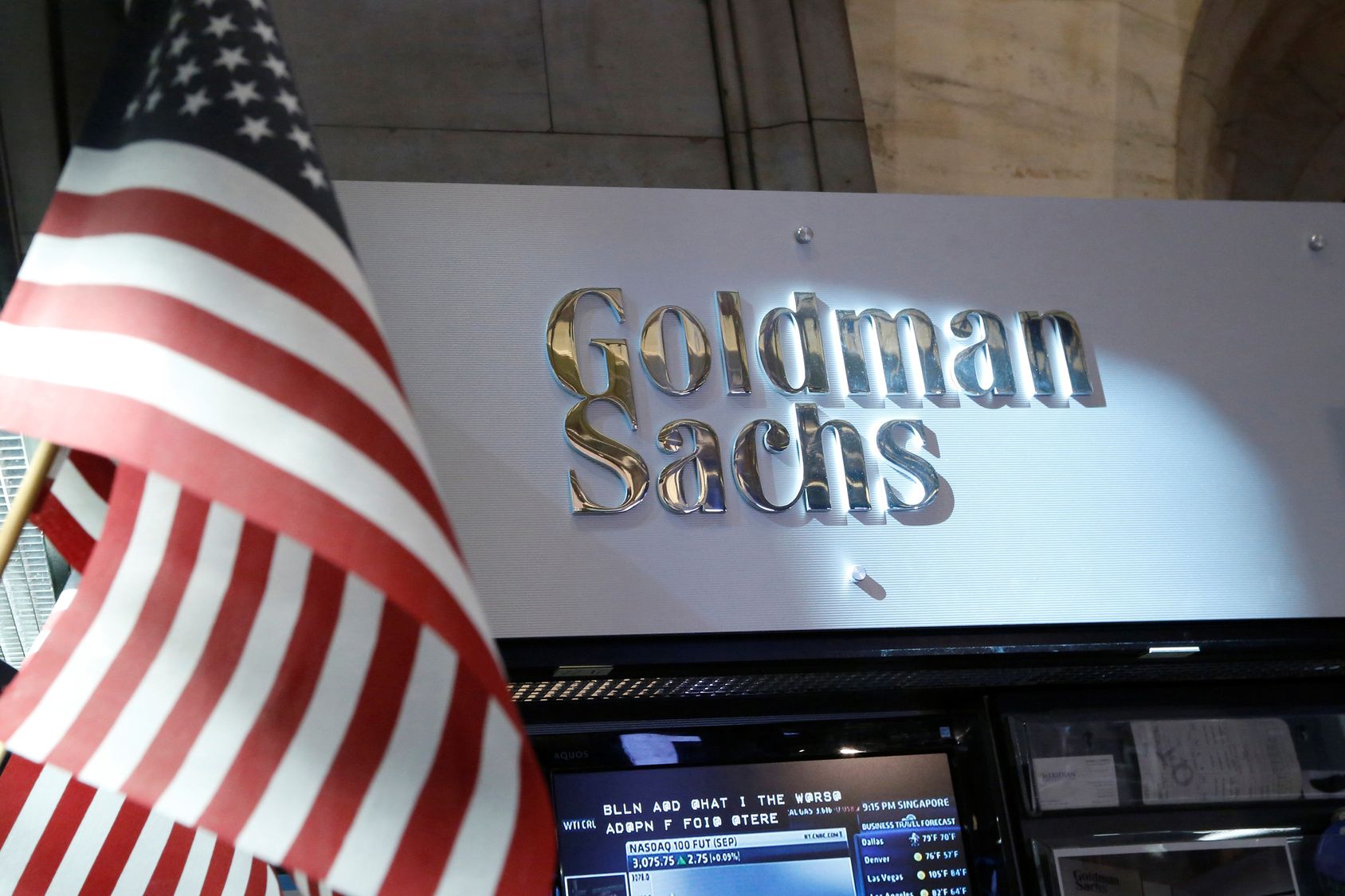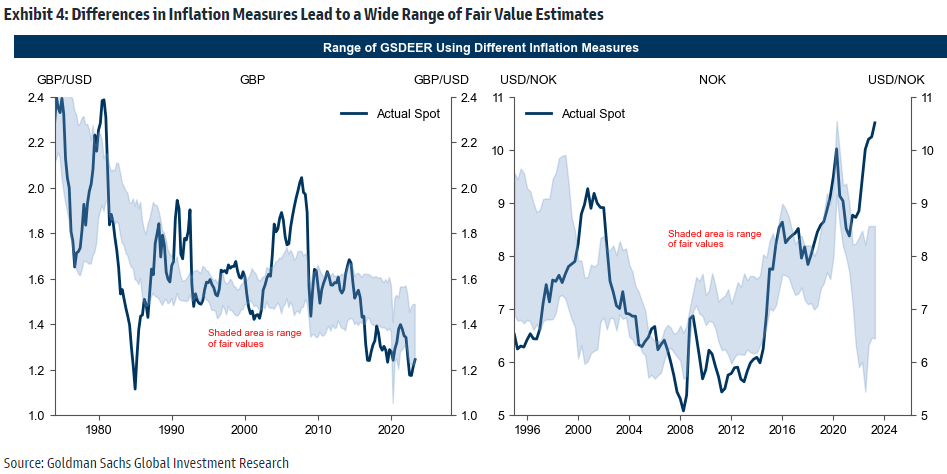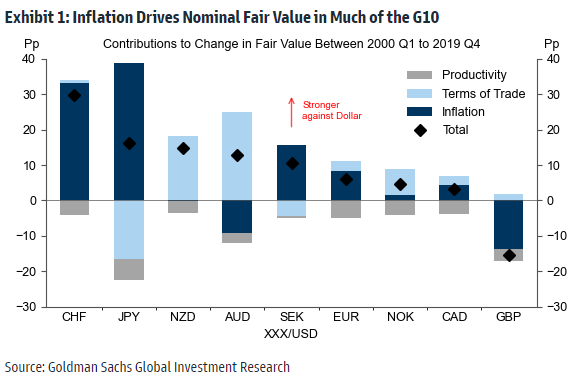How UK Inflation Predicts the GBP/USD Rate Outlook- Goldman Sachs
- Written by: James Skinner
-
"With few exceptions, these models tend to underperform a random walk at the very shortest horizons" - Goldman Sachs.

Above: A view of the Goldman Sachs stall on the floor of the New York Stock Exchange. REUTERS/Brendan McDermid/File Photo.
The Pound to Dollar exchange rate has been on a wild rollercoaster ride through recent years, wrongfooting many forecasts along the way, but research from Goldman Sachs shows how the inflation outlook can be a highly successful guide to the general trajectory of Sterling.
Since at least 1995 UK inflation has acted as a highly successful predictor of medium and long-term trends in the Pound-Dollar rate, and to such an extent that Sterling might actually be better described as a highly flexible form of Real Equilibrium Exchange Rate (REER).
Sterling tends to oscillate around a 'fair value' range that serves as a consistently accurate guide to the trend in Pound to Dollar rate when the appropriate level of the pair is inferred and computed using the annual inflation rate as a discount factor.
"Putting it all together, inflation is an important input to fair value estimates, especially in the G10. But measurement issues can lead to a wide range in the ‘real’ exchange rate calculation. That is especially true right now," says Michael Cahill, a G10 FX strategist at Goldman Sachs.

"Exhibit 4 plots GSDEER fair value estimates using the exact same formula, but with a variety of inflation types. The picture helps give a better idea of the inherent uncertainty in this exercise—GBP/USD fair value ranges from 1.20 to 1.50," Cahill and colleague Sid Bhushan write in a Monday research briefing.
The 'fair value' ranges depicted in Exhibit 4 above are comprised of numerous different conceptual measures of inflation including the Consumer Price Index, Producer Price Index, GDP deflator, and Unit Labour Costs.
But in relation to GBP/USD, the overall or primary measure of UK inflation has appeared to be the better predictor going as far back as 1995.
"Exhibit 7 presents a heatmap using this same process across all G10 currencies.[3] Generally, fair value estimates based on consumer prices and unit labor costs tend to perform the best, especially over a four-to-five-year horizon," says Cahill and Bhushan write.

"At longer horizons, the results become a bit more mixed but CPI-based measures tend to dominate," they add.
All of this forms part of the conceptual framework underlying the Goldman Sachs Dynamic Equilibrium Exchange Rate (GSDEER) model, which was first launched in 1995 and can be used to approximate fair values for currencies and economies where there is a reliable measurement of inflation.
Currently, this framework suggests an appropriate level or equilibrium for the Pound to Dollar rate to trade around would be somewhere near 1.27; a level that was almost seen earlier in May, although Cahill and Bhushan have warned against using the models for short-term trading signals.
"With few exceptions, these models tend to underperform a random walk at the very shortest horizons, which is consistent with our longstanding approach to use valuation as a long-term guide," they say.
